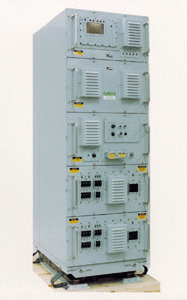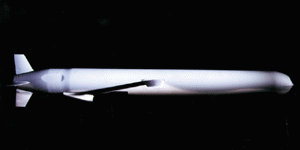ATDL Link-11/22
Advanced Tactical Data Link Program
- NATO Improved Link-11 (NILE)
- Common Shipboard Data Terminal Set (CSDTS)
- Common Data Link Management System (CDLMS)
- Mobile Universal Link Translator System (MULTS)
- Multiple Unit Link-11 Test and Operational Training System (MULTOTS)
GBS
Global Broadcast Service
GCCS-M (formerly JMCIS)
Global Command and Control System - Maritime
GFO
Geophysical/Geodetic Satellite Follow-On

IBS/JTT
Integrated Broadcast Service/Joint Tactical Terminal
JSIPS
Joint Service Imagery Processing System
JTIDS
Joint Tactical Information Distribution System

Lightweight
Super High Frequency (SHF)
Satellite Communications
- Defense Information Systems Network (DISN)
- Global Command and Control System (GCCS and GCCS-M)
- Contingency Tactical Air Control System (TACS) Automated Planning System (CTAPS)
- Advanced Narrow-Band Digital Voice Terminal (ANDVT)
- Worldwide direct dial STU-III capability
- PC-to-PC transfer via STU-III, voice teleconferencing
- Tactical Data Information Exchange Systems (TADIXS)
- Broadcast record message traffic
- Manual Relay Center Modernization Program (MARCEMP)
- Tomahawk Mission Planning packages and updates
- Imagery support
- DSN Telephone/ISDN access
- Joint Deployable Intelligence Support Service (JDISS)
- Joint Worldwide Intelligence Communications System (JWICS)
- Unclassified-but-Sensitive Internet Protocol Router Network (NIPRNET)
- Secret Internet Protocol Router Network (SIPRNET)
- Video Information Exchange System (VIXS)/Video Teleconferencing (VTC)
- Streamlined Alternative Logistic Transmission System (SALTS)
- Tactical Environmental Support System/Navy Integrated Tactical Environmental Subsystem (TESS/NITES)
MIDS–LVT
Multi-functional Information Distribution
System–Low Volume Terminal
Mini-DAMA
Miniature Demand Assigned Multiple Access
Navy METOC Sensors (Space)
Meteorological/Oceanographic Sensor Program
NAVSTAR
Global Positioning System (GPS)

NESP
Navy Extremely High Frequency
Satellite Communications Program
NSIPS
Navy Standard Integrated
Personnel System

NTCSS
Naval Tactical Command
Support System
OBU/OED
Ocean Surveillance Information System
Baseline Upgrade & Evolutionary Development
SABER
Situational Awareness Beacon with Reply
SCI ADNS/TACINTEL II+
Sensitive Compartmented Information Automated Digital Network
System/Tactical Intelligence Information Exchange Subsystem
-
Phase 1: Upgrade ship/shore equipment with IP capable devices
- Build 1: Install IP orientated software that meets Y2K compliance
- Build 2: ATM technology insertion
- Build 3: Integrate voice, data, video capability
Phase 2: Upgrade to IT21 (Information Technology for the 21st Century) Windows NT systems; complete transition to multi-media environment via JMCOMS and ADNS
UFO
UHF Satellite Communications Follow-On
Airborne Systems
TAMPS
Tactical Aircraft Mission Planning System
Submarine Systems
HDR
Submarine High Data-Rate Antenna

Surface Systems
ACDS
Advanced Combat Direction System

ATWCS
Advanced Tomahawk Weapon Control System

CEC
Cooperative Engagement Capability
Challenge Athena
Commercial Wideband Satellite
Communications Program

CHBDL-ST
Common High Band Data Link–
Shipboard Terminal

Mk 1 SSDS
Ship Self-Defense System
NFCS
Naval Fires Control System
RAIDS
Rapid Anti-Ship Cruise Missile
Integrated Defense System
Tomahawk
Afloat Planning System


